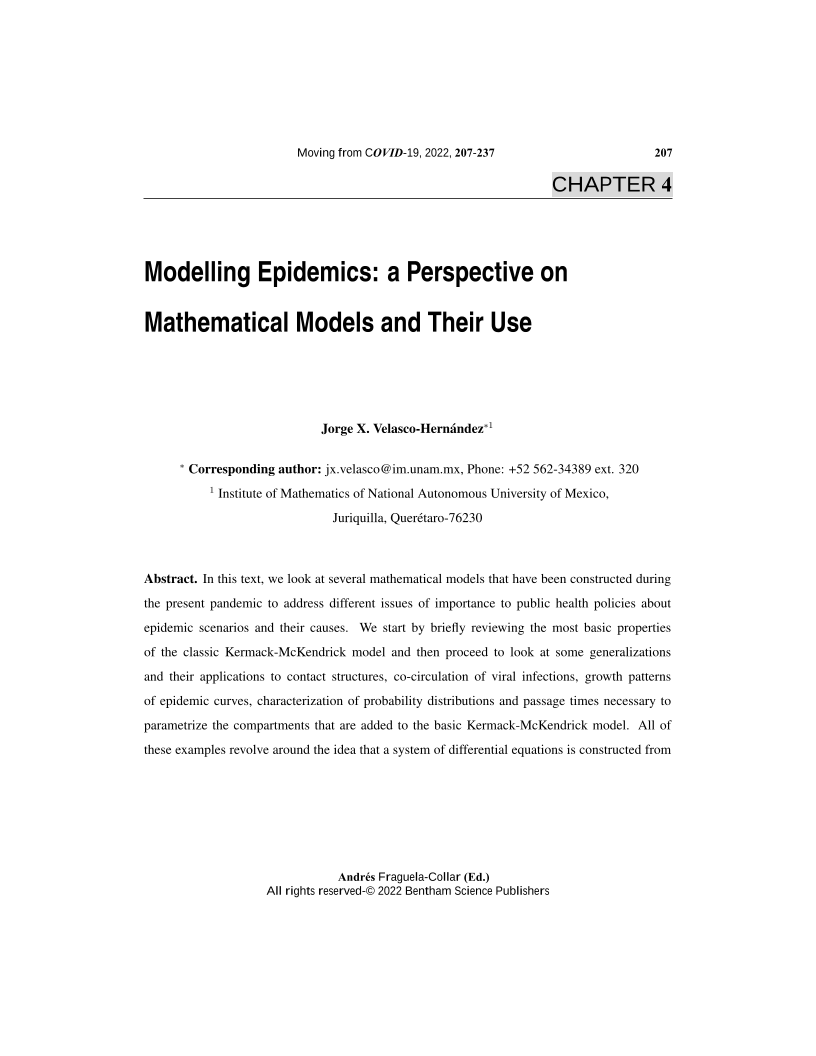Modelling Epidemics: a Perspective on Mathematical Models and Their Use

- By Jorge X. Velasco Hernandez1
-
View Affiliations Hide Affiliations1 Institute of Mathematics of National Autonomous University of Mexico, Juriquilla, Queretaro-7623
- Source: Moving From COVID-19 Mathematical Models to Vaccine Design: Theory, Practice and Experiences , pp 207-237
- Publication Date: September 2022
- Language: English
Modelling Epidemics: a Perspective on Mathematical Models and Their Use, Page 1 of 1
< Previous page | Next page > /docserver/preview/fulltext/9789815051902/chap4-1.gif
In this text, we look at several mathematical models that have been constructed during the present pandemic to address different issues of importance to public health policies about epidemic scenarios and their causes. We start by briefly reviewing the most basic properties of the classic Kermack-McKendrick model and then proceed to look at some generalizations and their applications to contact structures, co-circulation of viral infections, growth patterns of epidemic curves, characterization of probability distributions and passage times necessary to parametrize the compartments that are added to the basic Kermack-McKendrick model. All of these examples revolve around the idea that a system of differential equations is constructed from a specific epidemiological problem, has as a central and main theoretical and conceptual support the epidemiological, medical, and biological context that motivates its construction and analysis.
-
From This Site
/content/books/9789815051902.chap4dcterms_subject,pub_keyword-contentType:Journal -contentType:Figure -contentType:Table -contentType:SupplementaryData105

